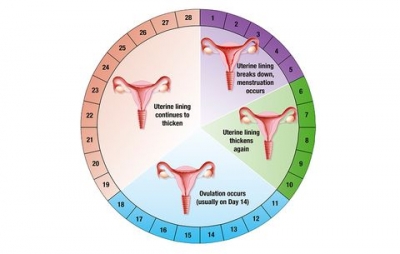
Every month or so, a woman’s body goes through the process of preparing for a possible pregnancy. This sequence is called the menstrual cycle.
Phase 1
Egg ripens: Prompted by hormones, an immature egg starts to grow inside a soft casing called a follicle. Your period may last 2 – 7 days, with most fluid being lost in the first two days.
Phase 2
Egg is released: The uterus lining thickens to prepare to receive an egg. Meanwhile, the follicle bursts and releases a ripe egg into the fallopian tube. During this phase, due to the oestrogen, your skin could be smoother, your breasts a little bigger and any discharge will be clear.
Menstrual cycle: This shows a typical 28-day menstrual cycle. In fact, it can take from 21 to 35 days to complete, and the times between stages vary a good deal.
Phase 3
Egg arrives in the uterus: At this point, if the egg is fertilized, it embeds itself in the uterus wall and starts to grow. You may feel slightly ‘bloated’ as this phase can trigger fluid retention throughout your body – but it’s not dangerous and doesn’t last.
Phase 4
Menstruation: If the egg is not fertilized, both the egg and the uterus lining fall apart and leave the body along with some blood. This is called menstruation, or having a period. This sudden change can cause mood swings (also called PMS Pre-Menstrual Stress) and you may also experience cramps as the uterus contracts in readiness to shed the built-up layer – which takes you back to Phase 1; having your period.
Picture Credit : Google

